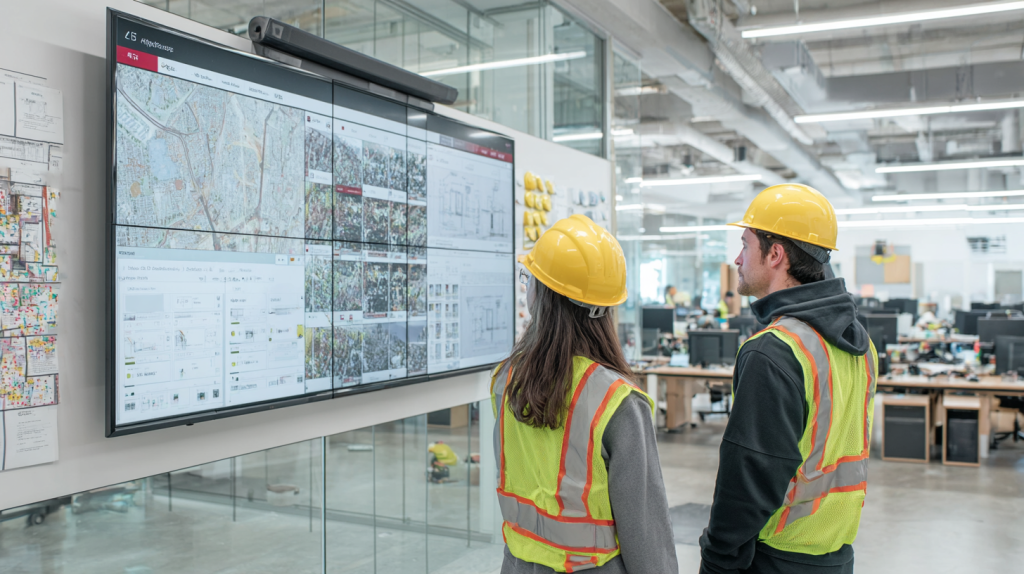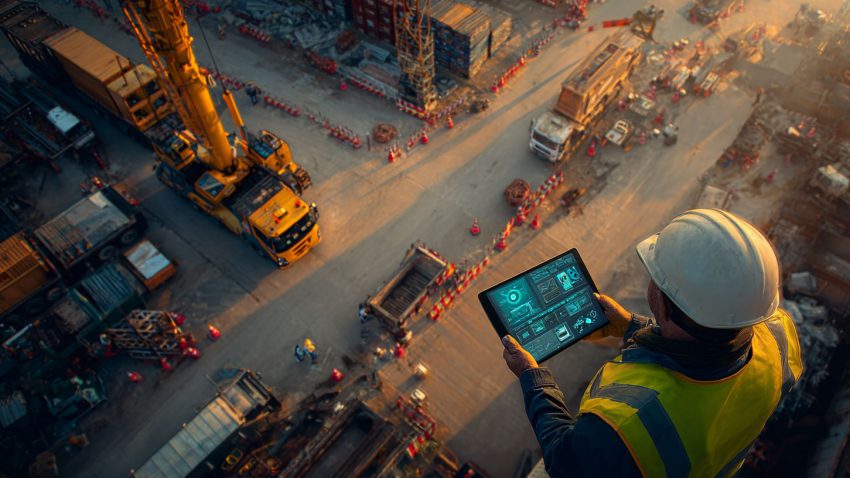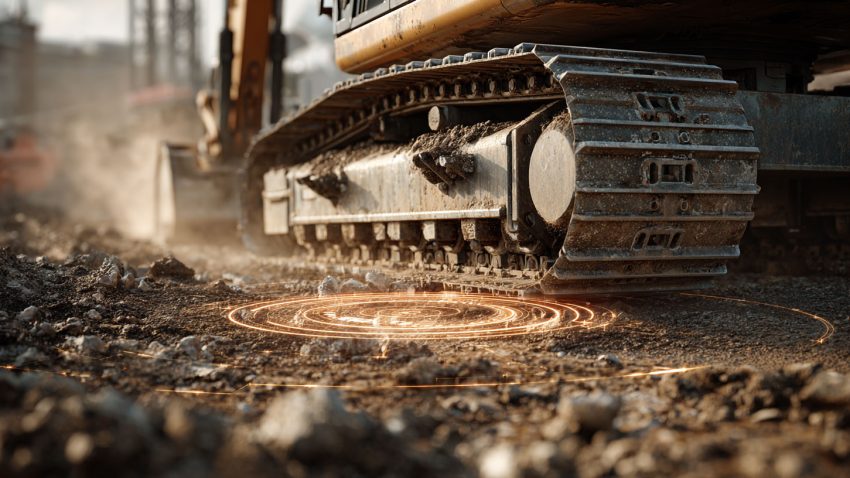Best Guide to Mission-Critical Construction: How to Coordinate and Schedule Hyperscale Data Center Builds
Table of Contents:

Building hyperscale data centers is not like building any other project—it’s the Olympics of construction scheduling. Tight timelines, overlapping trades, nonstop logistics, and zero margin for error make these projects mission-critical in every sense. Owners expect flawless coordination between teams managing power, cooling, networking, and structural work, all while maintaining security and uptime standards that rival aerospace engineering.
A single delay in a hyperscale project can impact millions of dollars in lost capacity or deployment delays for cloud providers. That’s why today’s top contractors rely on advanced real-time scheduling, AI-assisted logistics, and integrated coordination platforms like StruxHub to manage complex parallel workflows. Every material delivery, access window, and system integration must be planned to the minute—and tracked with precision.
For superintendents, project managers, and construction executives, coordinating mission-critical builds means more than assigning crews—it requires mastering flow control, pre-task sequencing, and equipment readiness. When done right, your scheduling system becomes a predictive engine that keeps trades aligned, vendors accountable, and critical-path activities protected.
This guide breaks down how to organize hyperscale data center builds using the latest digital workflows, predictive scheduling, and logistics automation tools—turning complexity into predictable performance.
Understanding the Complexity of Hyperscale Data Center Construction
Mission-critical construction projects are a category of their own. They combine industrial-scale systems, redundancy requirements, and concurrent installations across multiple trades—mechanical, electrical, plumbing, structural, and commissioning—all running at once. The result is a logistical puzzle where one small misstep can ripple across hundreds of dependencies.
The foundation of success starts with clarity of sequencing. Every phase—from slab-on-grade through MEP rough-in and equipment energization—must be mapped with precision. By using GIS-based visual layouts and real-time scheduling tools like StruxHub Schedule, project managers can overlay physical zones with activity timelines to ensure no trade conflicts occur. This approach transforms static Gantt charts into living site plans.
Hyperscale projects often run on 24/7 rotating shifts, making visibility across crews essential. Daily updates, permit tracking, and delivery coordination are centralized through StruxHub Forms and Deliveries. When updates occur in one module, the others reflect changes instantly—eliminating the lag that causes delays and double-bookings.
How do project teams manage complexity effectively?
- Use visual scheduling tools tied to actual floorplans or GIS zones.
- Assign crews by sequence and duration, not just discipline.
- Integrate logistics and reporting systems for full transparency.
Why does this matter for owners?
- It ensures predictability in delivery and performance, reducing risk across the entire supply chain.
What trends are reshaping mission-critical coordination?
- AI-powered scheduling predictions, automated progress tracking, and real-time field dashboards.
Top Features
- GIS-based activity mapping tied to schedules
- Shift-based crew scheduling and accountability tracking
- Real-time integration between logistics, forms, and reports
Top Benefits
- Reduced trade interference and downtime
- Faster decision-making through shared visibility
- Higher schedule reliability and safety compliance
Best Practices
- Review overlap reports weekly with all trade leads
- Track daily percent-complete metrics via mobile forms
- Use predictive analytics to identify emerging bottlenecks
FAQ
Q: Why is hyperscale construction considered mission-critical?
A: Because delays directly impact operational uptime for cloud and data clients, leading to massive revenue losses.
Q: How does integrated scheduling improve ROI?
A: It eliminates downtime and ensures every trade contributes to the project’s critical path efficiently.
Q: Where can I find related StruxHub resources?
A: Explore related topics on StruxHub’s blog for scheduling and data center coordination.
Mission-critical coordination is all about visibility and control—achievable only through real-time scheduling and digital integration.
Related StruxHub articles
- How Construction Command Centers Help GCs Centralize Field Data and Crew Coordination — Command Centers
- Top Real-Time Construction Dashboards for Jobsite Visibility and Project Tracking — Dashboards
- AI Scheduling vs Real-Time Construction Software: What Works Best on the Jobsite? — Scheduling Tools

Coordinating Trades, Zones, and System Integration
In a hyperscale data center, there is no such thing as a single crew area. Dozens of trades overlap within tight footprints—electrical installers working above mechanical pipefitters, low-voltage contractors running cable trays over live equipment, and commissioning teams testing systems that others are still wiring. Coordination here is everything.
The modern approach to zone control uses digital access coordination. Through StruxHub Deliveries and Schedule, teams assign time windows not only for deliveries but for physical access zones. For instance, Area 3A might be reserved for electrical terminations in the morning and mechanical punchlist work in the afternoon. This ensures no cross-interference and maximum productivity.
AI-driven scheduling can also detect when two trades are planned for the same confined space—automatically flagging conflicts before they cause downtime. These insights allow superintendents to shift resources proactively rather than reacting to field congestion.
How do GCs manage overlapping trade activity?
- Divide large facilities into clear zones with specific access control.
- Use live scheduling dashboards to prevent double-booked work areas.
- Apply AI conflict detection for simultaneous task warnings.
What challenges does this solve?
- Eliminates trade interference, rework, and safety risks.
How does this integrate with existing workflows?
- Coordination data syncs automatically with field reports and access forms via StruxHub’s cloud platform.
Top Features
- Zone-based access scheduling tied to activity types
- Automatic conflict detection for overlapping work
- Real-time notifications for area readiness
Top Benefits
- Smoother sequencing between trades
- Increased safety and less rework
- Better resource allocation and accountability
Best Practices
- Assign one logistics coordinator per floor or system zone
- Require daily confirmation of task readiness via digital forms
- Use drone or camera verification to validate progress visually
FAQ
Q: What problem does zone-based coordination solve?
A: It prevents simultaneous work in tight spaces, ensuring efficiency and safety.
Q: What measurable results do teams see?
A: Up to 20% reduction in trade interference incidents and faster area turnovers.
Zoned coordination replaces chaos with structure—transforming hyperscale construction from reactive to predictable.
Related StruxHub articles
- Best Real-Time Construction Dashboards for Jobsite Visibility and Project Tracking — Dashboards
- How General Contractors Use Real-Time Scheduling Software to Keep Projects Moving — Scheduling
- How Construction Command Centers Help GCs Centralize Field Data and Crew Coordination — Command Centers
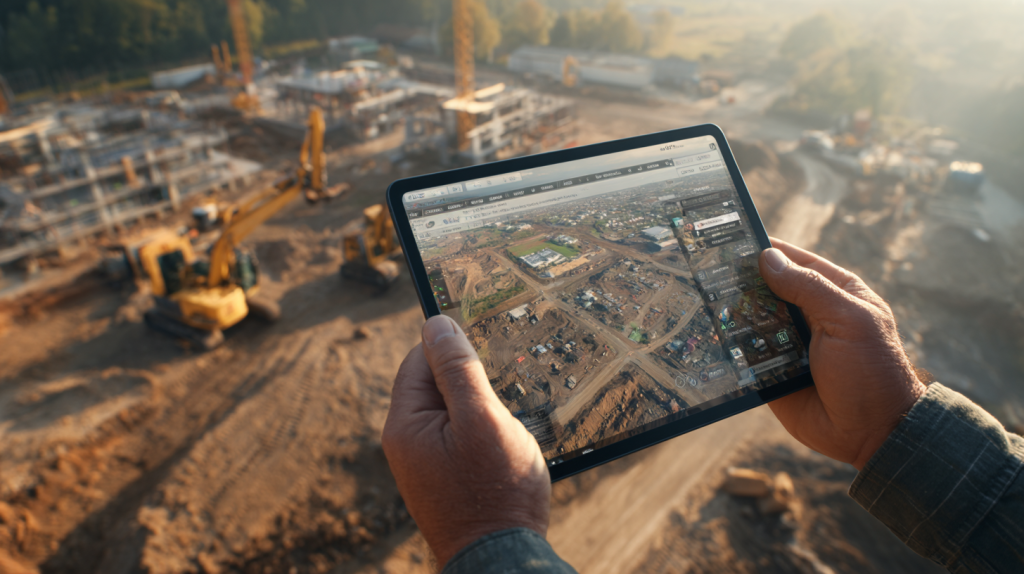
StruxHub
Experience the power of StruxHub today and witness firsthand how it can revolutionize your construction operations.
Scheduling Equipment Deliveries, Power-Ups, and Commissioning
In mission-critical environments, the timing of large equipment deliveries and system energization milestones can make or break the project. Each stage—rack installation, power-up, cooling startup, and network commissioning—requires precise sequencing and contingency planning.
With StruxHub Deliveries, superintendents can assign unique IDs to every major equipment load, including generators, switchgear, and air-handling units. AI scheduling identifies which tasks are dependent on their installation so crews downstream can plan accordingly. When a delivery slips, notifications trigger automatic adjustments in the schedule to protect the overall timeline.
These high-value materials also demand detailed security and inspection protocols. By using StruxHub Forms, teams capture chain-of-custody reports, check-in photos, and inspection logs instantly. This data not only ensures compliance but gives owners transparent proof of quality control and documentation.
Why are commissioning schedules so complex?
- Multiple disciplines (mechanical, electrical, IT, fire/life safety) must align precisely to activate systems safely.
How can teams coordinate commissioning efficiently?
- Integrate logistics tracking, digital forms, and real-time scheduling into one view to manage dependencies.
What benefits does automation bring?
- AI-assisted look-aheads can forecast conflicts and reschedule dependencies instantly.
Top Features
- Delivery tracking with automated dependency mapping
- Digital inspection forms with photo verification
- AI-driven commissioning forecast alerts
Top Benefits
- Fewer delays from misaligned deliveries or inspections
- Streamlined handoffs between trades and QA teams
- Complete audit trail for owner turnover packages
Best Practices
- Create commissioning zones aligned to physical systems
- Require sign-off forms for each turnover milestone
- Use predictive look-aheads weekly for high-risk equipment
FAQ
Q: What problem does this solve for mission-critical projects?
A: It maintains alignment between procurement, logistics, and schedule dependencies, avoiding critical path impacts.
Q: How does digital coordination improve commissioning?
A: It ensures system readiness is verified and documented, accelerating owner acceptance.
Real-time logistics coordination keeps critical equipment, crews, and commissioning milestones perfectly synchronized.
Related StruxHub articles
- Best Guide to Construction Risk Management: How Top Contractors Control Jobsite Risk and Improve Field Accountability — Risk.
- Top Real-Time Construction Dashboards for Jobsite Visibility and Project Tracking — Dashboards
- How AI Tools Are Automating Daily Construction Reports for Superintendents — AI Tools
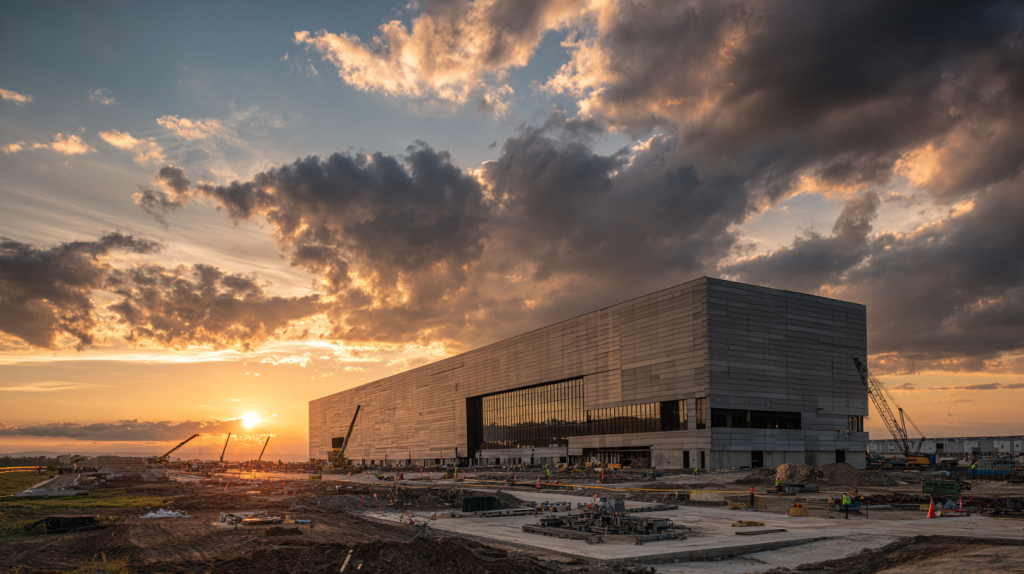
Integrating Real-Time Data and Digital Reporting for Mission-Critical Accuracy
In hyperscale construction, there’s no time for ambiguity. Owners expect real-time updates, not weekly summaries. Every outage window, crane pick, and system test must be logged precisely, and any delay should trigger immediate corrective action. This is why real-time data integration and digital reporting are the backbone of mission-critical scheduling.
With StruxHub Home acting as a centralized hub, all logistics, deliveries, and schedules connect under one digital framework. Every status update, inspection result, and delivery timestamp is visible in live dashboards—giving both field teams and executives a synchronized understanding of progress. By combining StruxHub Forms and Deliveries, teams can instantly capture site reports, flag delays, and attach photos—all without manual paperwork or data lag.
This continuous data stream allows superintendents to make rapid, informed decisions. For example, when a critical cooling unit is delayed, AI analytics automatically adjust the schedule and suggest contingency moves, such as reprioritizing crew allocation or shifting access to adjacent zones. This real-time agility is what separates reactive projects from those that finish on time.
What systems make this effective?
- Unified dashboard that integrates schedules, deliveries, and reports.
- Real-time data capture from the field via mobile devices.
- AI-driven analytics that trigger auto-adjustments when risks arise.
How can data improve mission-critical outcomes?
- It provides factual, time-stamped proof of progress and compliance, reducing disputes and claims.
What does a successful implementation look like?
- Live dashboards visible to all stakeholders, reducing email chains and outdated PDFs.
Top Features
- Centralized mission-control dashboard
- Instant data synchronization across modules
- Automated risk alerts and dependency tracking
Top Benefits
- Faster decision-making and accountability
- Reduced reporting overhead
- Transparent communication for owners and clients
Best Practices
- Standardize reporting templates for daily use
- Assign clear data ownership per trade or subcontractor
- Review dashboards in daily coordination huddles
FAQ
Q: What’s the advantage of real-time reporting in hyperscale builds?
A: It ensures that all stakeholders make decisions based on live, verified information.
Q: How does StruxHub support this process?
A: By connecting scheduling, deliveries, and forms into one live system accessible from anywhere.
Real-time data transforms project control from reactive management into predictive command.
Related StruxHub articles
- Top Real-Time Construction Dashboards for Jobsite Visibility and Project Tracking — Dashboards
- How Construction Command Centers Help GCs Centralize Field Data and Crew Coordination — Command Centers
- Construction Data Analytics: How to Turn Raw Jobsite Data into Actionable Insights — Analytics
Related links: https://struxhub.com/products/home/ • https://struxhub.com/products/forms/ • https://struxhub.com/products/deliveries/
StruxHub
Discover how StruxHub can revolutionize your construction management. Contact us today!
Managing Risk, Compliance, and Quality in Mission-Critical Environments
Hyperscale construction is defined by risk management. Power systems, fiber networks, and HVAC redundancy must all meet exacting uptime and safety standards. A minor compliance lapse can cost millions or trigger extended handover delays. The key is embedding risk control directly into your scheduling and logistics workflows—not treating it as an afterthought.
With StruxHub Forms, project teams can automate compliance documentation, quality checklists, and inspection reports. Field crews capture live verification photos, and those entries sync immediately with the project record. This means QA/QC managers and owners can validate progress remotely and verify that every activity meets specifications.
AI analytics in StruxHub Schedule can flag deviations from baseline plans, such as safety hold-ups or inspection backlogs. This visibility allows teams to reassign resources and prevent cascading delays. Integrating compliance into the logistics workflow builds a trackable audit trail that satisfies both safety authorities and enterprise clients who demand rigorous documentation.
What systems enhance compliance monitoring?
- Digital inspection and QA forms integrated with scheduling data.
- Auto-generated logs for safety and quality assurance.
- Real-time dashboards for tracking status and exceptions.
How does digital reporting mitigate risk?
- By catching issues early, documenting them immediately, and preventing recurrence through analytics.
What defines quality success on hyperscale projects?
- Transparent, traceable records proving that systems were installed, tested, and commissioned per specification.
Top Features
- Auto-linked QA/QC forms and safety reports
- Predictive analytics for compliance tracking
- Visual audit trails for every major activity
Top Benefits
- Fewer rework cycles and faster sign-offs
- Complete traceability for owner turnover
- Stronger safety performance and accountability
Best Practices
- Integrate QA/QC review checkpoints into daily huddles
- Require digital verification for all inspection milestones
- Use dashboards to visualize safety trends weekly
FAQ
Q: How do digital forms improve compliance?
A: They provide instant verification and eliminate manual reporting delays.
Q: What’s the biggest benefit of risk integration?
A: It allows proactive mitigation instead of post-incident recovery.
By merging compliance and quality workflows with scheduling, contractors transform risk into measurable reliability.
Related StruxHub articles
- Best Guide to Construction Risk Management: How Top Contractors Control Jobsite Risk and Improve Field Accountability — Risk
- Construction Site Safety Software: How Digital Tools Improve Accountability — Safety Tools
- How AI Tools Are Automating Daily Construction Reports for Superintendents — AI Tools
Related links: https://struxhub.com/products/forms/ • https://struxhub.com/products/schedule/
Sustaining Efficiency and Continuous Improvement After Turnover
When the hyperscale facility goes live, the project isn’t over—it evolves. Owners often expect ongoing data access, maintenance coordination, and lessons-learned reports for future builds. This stage defines your long-term reputation in mission-critical construction. A good contractor doesn’t just deliver the building—they deliver the data that built it.
Using StruxHub Home and Schedule, project managers can archive all scheduling, logistics, and compliance data into a searchable format. This “digital twin” becomes an operational resource for owners and maintenance teams. When future expansions occur, these insights shorten planning cycles and reduce ramp-up time.
Continuous improvement comes from analytics—tracking metrics like delivery punctuality, task efficiency, and inspection turnaround time across multiple hyperscale projects. StruxHub Deliveries and Forms provide the data backbone for this feedback loop.
How can contractors build long-term efficiency?
- Archive logistics and compliance data in structured dashboards.
- Compare performance across multiple projects to refine processes.
- Use historical analytics for early risk detection in future builds.
What KPIs matter most post-handover?
- Delivery efficiency, inspection accuracy, and closeout timeliness.
How does this impact profitability?
- Streamlined documentation reduces closeout costs and strengthens client relationships.
Top Features
- Archived project dashboards for future benchmarking
- Continuous analytics on logistics and scheduling efficiency
- Post-project reporting and performance tracking
Top Benefits
- Faster project start-up on repeat builds
- Stronger client trust and repeat work opportunities
- Data-driven decision-making across enterprise portfolios
Best Practices
- Standardize data handover templates for owners
- Include lessons-learned reports in closeout documentation
- Schedule internal debriefs to translate analytics into improvement actions
FAQ
Q: What happens to project data after handover?
A: With StruxHub, it remains accessible in a digital archive for future planning and auditing.
Q: How can contractors leverage analytics for growth?
A: By identifying patterns that improve forecasting, scheduling, and profitability.
Treating every project as a learning system transforms hyperscale construction into a cycle of constant refinement and competitive advantage.
Related StruxHub articles
- Top Real-Time Construction Dashboards for Jobsite Visibility and Project Tracking — Dashboards
- How Construction Command Centers Help GCs Centralize Field Data and Crew Coordination — Command Centers
- Construction Data Analytics: The Power of Visualization and Automated Reporting — Analytics
Related links: https://struxhub.com/products/home/ • https://struxhub.com/products/forms/ • https://struxhub.com/products/deliveries/
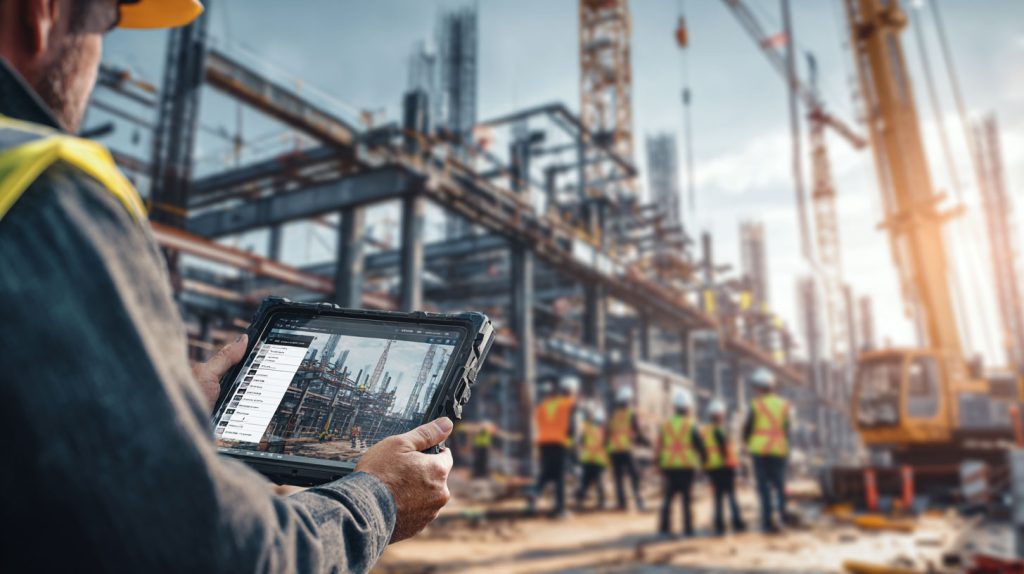
How StruxHub Supports Contractors and Project Teams in Mission-Critical Construction
Mission-critical projects demand perfection. Coordinating power, cooling, cabling, and commissioning across thousands of concurrent tasks is nearly impossible with spreadsheets and emails. That’s why contractors building hyperscale data centers are turning to StruxHub, the all-in-one construction management platform that centralizes scheduling, logistics, and communication into one intuitive system.
With StruxHub Home, project leaders get a unified command center view of every site activity. It consolidates updates from scheduling, deliveries, and forms so your field team and office staff share the same real-time data. This visibility allows superintendents to make quick, data-backed decisions when changes happen on site—keeping high-stakes projects on schedule.
The Scheduling module enables precise coordination across hundreds of activities. Trade sequencing, look-ahead planning, and critical-path tracking are all managed in one connected interface. For logistics control, StruxHub Deliveries streamlines material flow by assigning time windows, routes, and gate access to every shipment—eliminating congestion and improving predictability.
StruxHub Forms extends this efficiency into compliance and safety. Field teams complete inspections, QA/QC reports, and sign-offs directly from mobile devices, with instant synchronization to dashboards. The result: transparent reporting, stronger documentation, and owner confidence that your team maintains total control of the mission-critical environment.
By integrating data, communication, and reporting into one cloud-based ecosystem, StruxHub helps contractors execute complex builds with military precision. From design coordination to final commissioning, it’s the platform that turns hyperscale chaos into predictable performance.
With StruxHub, project teams gain real-time visibility, clear communication, and the confidence to deliver every build on schedule.
Internal links used:
https://struxhub.com/products/home/
https://struxhub.com/products/schedule/
https://struxhub.com/products/deliveries/
https://struxhub.com/products/forms/
https://struxhub.com/resources/blog/

FAQ: Mission-Critical Construction and Data Center Coordination
1. How Does StruxHub Support Contractors and Project Teams in Mission-Critical Construction?
StruxHub supports mission-critical construction teams by centralizing coordination, communication, and documentation into one real-time platform. Large projects like hyperscale data centers involve dozens of trades, thousands of tasks, and nonstop scheduling challenges. StruxHub brings order to that complexity.
Superintendents and project managers can use StruxHub to track equipment deliveries, workforce activity, and safety documentation—all in one interface. The platform provides live dashboards showing the status of power installations, mechanical tie-ins, inspections, and commissioning tasks. This eliminates the guesswork that often causes delays or conflicts.
StruxHub also improves collaboration between field and office teams. Cloud-based updates ensure everyone—from the general contractor to trade foremen—works from the same set of data. AI-powered analytics detect potential bottlenecks or overlapping tasks, helping teams plan ahead rather than react.
For mission-critical projects, where uptime and precision matter most, StruxHub acts as the connective tissue that links every workflow. It keeps safety, scheduling, QA/QC, and logistics perfectly aligned, ensuring projects stay predictable, compliant, and on schedule.
2. How Can Contractors Sustain Efficiency and Continuous Improvement After Turnover?
Efficiency doesn’t stop when the keys are handed over. For mission-critical facilities, post-turnover operations depend on the systems, data, and documentation built during construction. Contractors who plan for this early can help owners sustain performance long after completion.
Continuous improvement begins with digital transparency. By capturing as-built data, inspection records, and commissioning test results in platforms like StruxHub, contractors leave owners with a detailed digital record of the facility’s systems and workflows. This enables maintenance teams to trace performance issues, validate warranties, and schedule preventive service confidently.
AI-driven analytics also help identify patterns from previous projects. Contractors can analyze productivity metrics, QA/QC trends, or scheduling data to refine processes on future builds. In mission-critical construction, these lessons are invaluable—they shorten future timelines and reduce startup risks.
With organized, accessible data and a commitment to learning, contractors turn turnover into transformation—delivering not just a building, but a smarter, more efficient operation that improves over time.
3. How Do Construction Teams Manage Risk, Compliance, and Quality in Mission-Critical Environments?
Managing risk, compliance, and quality is at the core of mission-critical construction. Each system—from power and cooling to fire suppression and networking—must perform flawlessly under any condition. A single compliance lapse can jeopardize certification, uptime, and client trust.
Teams mitigate risk through meticulous QA/QC processes and integrated project controls. Every task is documented, inspected, and verified before the next phase begins. Platforms like StruxHub automate this process by tracking inspections, approvals, and corrective actions in real time.
Compliance management is equally important. Contractors must align with codes like NFPA, OSHA, ISO, and local energy regulations. Digital tools ensure all permits, inspection logs, and safety plans are organized and accessible. AI analytics then flag inconsistencies or missing data before audits occur.
Quality control, meanwhile, is embedded in daily workflows. Field teams use checklists, mobile inspections, and photo verification to prove that installations meet design intent. When combined, these measures create a culture of precision and accountability—ensuring that mission-critical facilities meet the highest standards of reliability and performance.
4. How Does Real-Time Data and Digital Reporting Improve Mission-Critical Accuracy?
Real-time data has become the backbone of mission-critical accuracy. In hyperscale environments, decisions must be made quickly—and one outdated document or delayed report can cause cascading issues. Real-time digital reporting gives teams the confidence that they’re always working from the latest information.
By integrating IoT sensors, AI analytics, and mobile field reporting, digital platforms like StruxHub provide a constant feedback loop between the jobsite and the office. Superintendents can monitor installation progress, equipment conditions, and QA/QC checklists live. When an issue arises—say, a temperature fluctuation in a cooling zone or a delivery delay—the system flags it immediately.
These tools eliminate the lag time between action and awareness. Instead of weekly reports, project managers see performance metrics minute by minute. This real-time transparency enhances safety, scheduling, and compliance across every construction phase.
Ultimately, digital reporting isn’t just about speed—it’s about accuracy and trust. When every stakeholder sees the same data, teams collaborate faster, make better decisions, and prevent errors before they reach critical systems.
5. How Do Superintendents Schedule Equipment Deliveries, Power-Ups, and Commissioning in Data Center Projects?
Scheduling in mission-critical construction is a balancing act. Every equipment delivery, power-up, and commissioning test must happen in precise sequence to avoid delays and ensure safety. Superintendents use a combination of digital scheduling tools and real-time logistics tracking to manage these dependencies.
For example, large generators, UPS systems, and switchgear require coordinated staging and crane lifts. Cooling equipment installation must align with electrical readiness, while commissioning teams depend on prior completion of QA/QC checks. StruxHub streamlines these workflows by linking delivery schedules, work packages, and testing milestones in one interactive calendar.
The platform also integrates with vendor systems to track shipments and automatically update schedules when delays occur. This real-time insight helps superintendents reschedule efficiently without derailing the broader project timeline.
When every delivery and power-up is synchronized, commissioning proceeds smoothly, and the facility transitions seamlessly into operation. StruxHub’s scheduling visibility ensures that precision planning isn’t just a goal—it’s the standard.
6. How Can Contractors Coordinate Trades, Zones, and System Integration on Large Data Center Sites?
Trade coordination is one of the most complex aspects of hyperscale construction. Multiple trades—electrical, mechanical, structural, and IT—must work simultaneously in shared spaces without interference. Coordination failures lead to rework, delays, and even safety risks.
StruxHub simplifies this challenge through digital zone mapping and live coordination dashboards. Each trade uploads their work plans, PTPs, and progress updates into the platform, allowing superintendents to visualize overlapping areas and sequencing conflicts.
AI automatically detects when two trades are scheduled in the same zone and alerts teams to potential clashes. Real-time updates ensure that everyone stays synchronized, whether it’s an electrician pulling conduit or a mechanical crew installing chilled water piping.
System integration is also managed digitally. As systems like power distribution and cooling networks are connected, StruxHub tracks test results, tie-ins, and inspections. This holistic view ensures all components function as one cohesive, reliable infrastructure.
On large data center projects, coordination isn’t just about collaboration—it’s about precision. StruxHub gives contractors the digital control to achieve both.
7. What Makes Hyperscale Data Center Construction So Complex Compared to Traditional Projects?
Hyperscale data centers are mission-critical facilities designed for massive computing power and nonstop uptime. Their complexity lies in scale, speed, and the integration of highly specialized systems. Unlike standard commercial projects, every element—power, cooling, networking, and redundancy—must function flawlessly together.
The logistics alone are enormous. Thousands of deliveries, multiple megawatts of power, and miles of cabling must be installed in perfect sequence. Crews work around the clock to meet aggressive timelines, often across multiple zones or buildings simultaneously.
Superintendents must coordinate dozens of subcontractors while maintaining strict safety, security, and quality standards. Commissioning adds another layer of difficulty, requiring detailed documentation and testing for every component before handover.
This is why digital project management tools like StruxHub have become indispensable. They centralize scheduling, communication, and QA/QC in one platform—helping teams handle the scale and precision required for hyperscale construction.
In short, hyperscale data center projects combine industrial complexity with surgical precision—and only the most organized, data-driven teams succeed.

